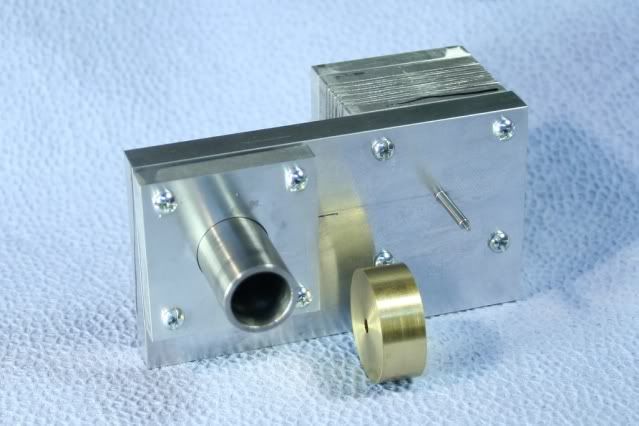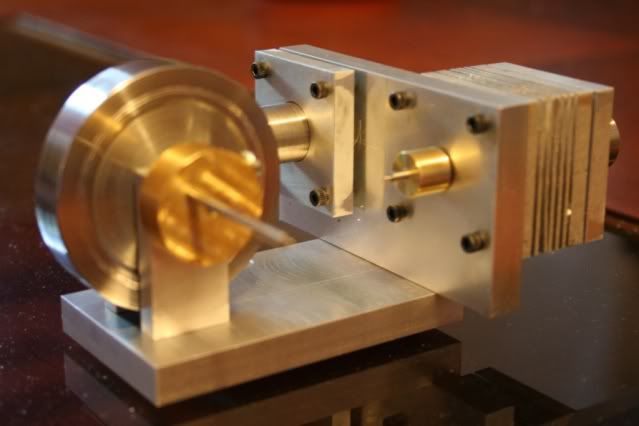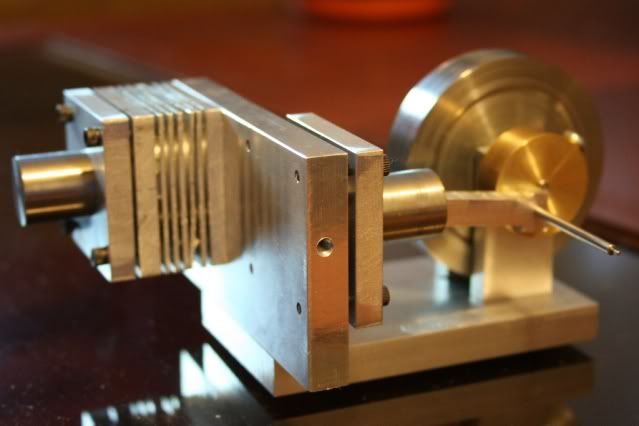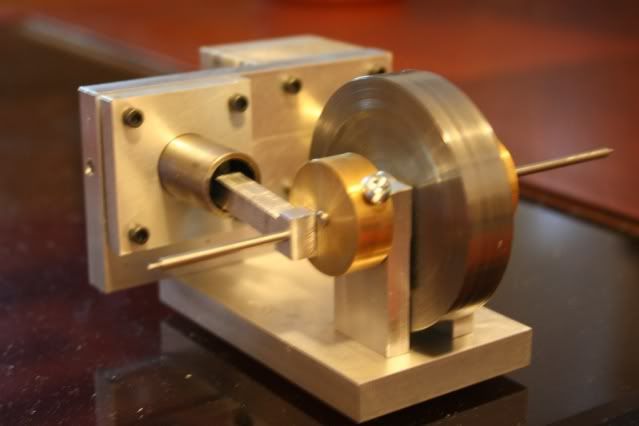Thanks Zee. Yep, I got tired of those itty bitty 2-56 threads and wanted something a little more hefty.
Thanks Dean, but today I hit the wall. Spent a goodly amount of time but little to show for it.
Not much to show today for a fairly lengthy session in the shop. I lost a lot of time making a messed up con rod for the power side. Actually, the mistake was made rather quickly, as usual, but only after putting a couple hours into it.
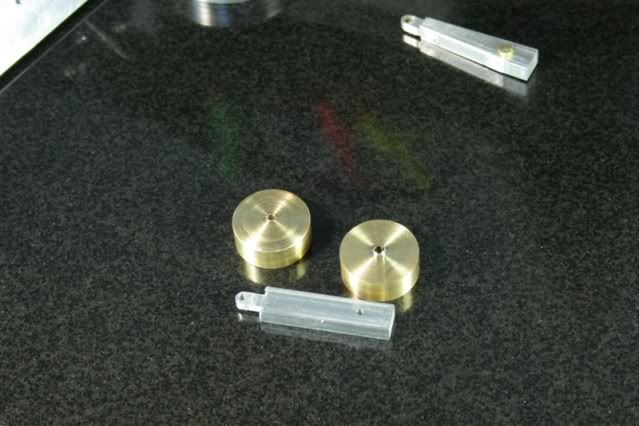
My original plan was to make some crank arms out of aluminum, but the engine is looking way too silver and needed a little color. So, I decided to make a couple crank disks ala Elmer out of brass. I still need to clean them up some; theyll be locked on the axel with grub screws so I can play with the angle between the two pistons. The boogered up con rod is in the background, remake in the front. I also finished up the power piston but forgot to include it in the group shot.
Thanks for looking.
P.S: As a side note, I see a lot of beautiful pictures. The focus is great, color, lighting, depth of field, composition. Everything is perfect. On the other hand mine all look washed out and crappy. Could one of you guys offer up a thread on taking pictures?
Ive got a good camera, Canon EOS Digital Rebel SLR, but I seem to get better pictures with my old Kodak point-and-shoot.
Thanks Dean, but today I hit the wall. Spent a goodly amount of time but little to show for it.
Not much to show today for a fairly lengthy session in the shop. I lost a lot of time making a messed up con rod for the power side. Actually, the mistake was made rather quickly, as usual, but only after putting a couple hours into it.

My original plan was to make some crank arms out of aluminum, but the engine is looking way too silver and needed a little color. So, I decided to make a couple crank disks ala Elmer out of brass. I still need to clean them up some; theyll be locked on the axel with grub screws so I can play with the angle between the two pistons. The boogered up con rod is in the background, remake in the front. I also finished up the power piston but forgot to include it in the group shot.
Thanks for looking.
P.S: As a side note, I see a lot of beautiful pictures. The focus is great, color, lighting, depth of field, composition. Everything is perfect. On the other hand mine all look washed out and crappy. Could one of you guys offer up a thread on taking pictures?
Ive got a good camera, Canon EOS Digital Rebel SLR, but I seem to get better pictures with my old Kodak point-and-shoot.





